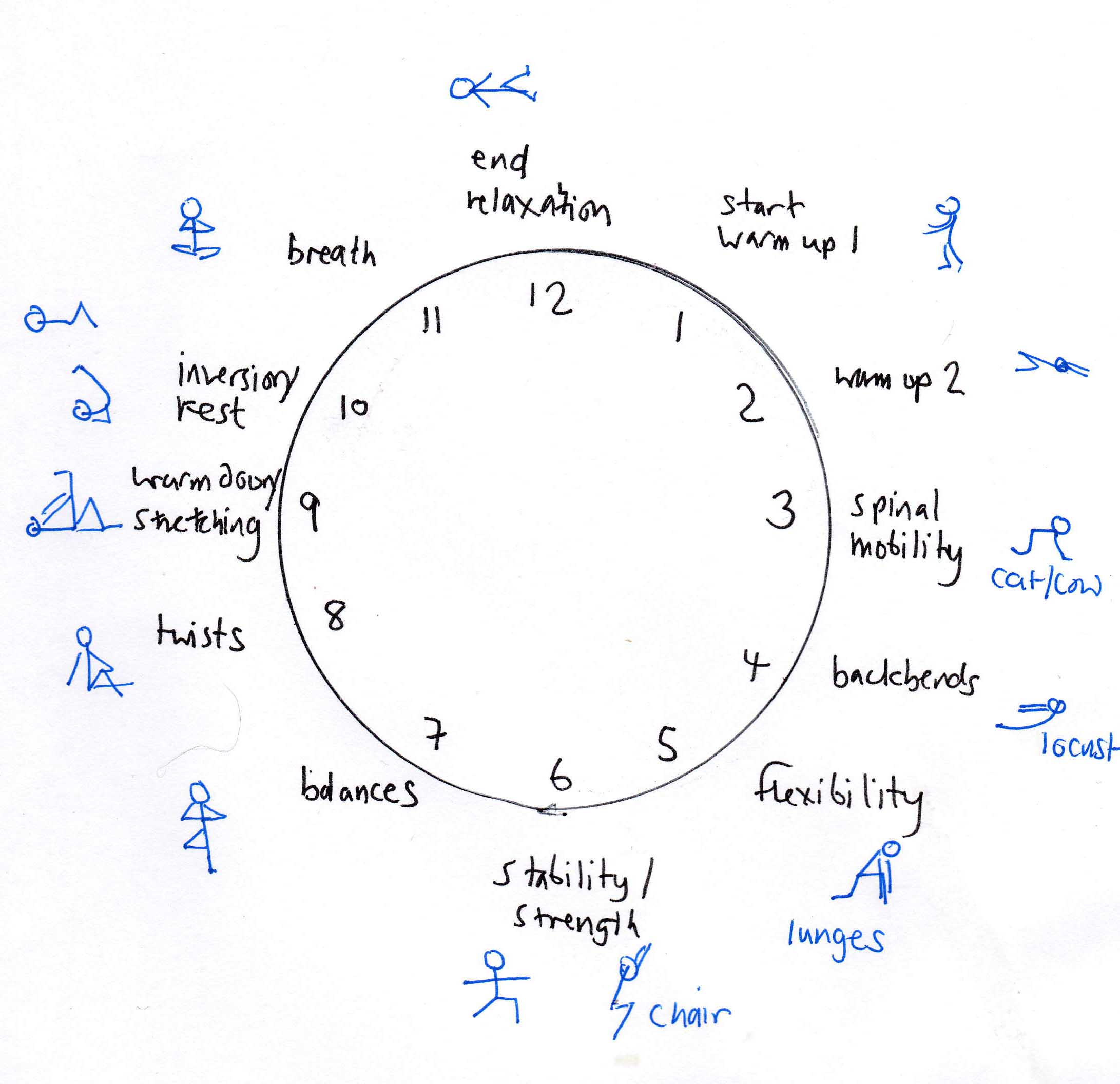What is a class like?
I am a hatha yoga teacher, and I enjoy working with beginners and older students. My classes are small and friendly, and I like to take a relatively gentle approach and moving at the pace of the class, offering students the opportunity to deepen their practice with some stronger poses when they are ready. Don't worry if you think you won't be fit or bendy enough. There's no such thing as 'being no good at yoga' .. or thinking .. 'I'm too stiff/old/inflexible/overweight': Everyone - older students, those carrying a few extra pounds, sports people needing a good stretch, and men - yoga is for you!
I like to pay close attention to alignment and posture in order to encourage everyone to practise safely and within their own limits.
My classes begin with a slow warm up, paying attention to breathing and posture, before moving more deeply into the yoga poses (asanas) themselves, and ending with a short relaxation. My aim is to encourage students to work safely, focussing on improving strength and flexibility, whilst helping to let go of tension. Above all, my yoga classes are friendly and enjoyable, and a great way of coming together with other people to develop the good both in our bodies and ourselves.
Back ache?
I can offer tailor made classes for anyone suffering from lower back issues. These are taught one to one, or one to two. Please contact me for further information if you are interested in finding out more.
Qualifications
I trained as a teacher with Camyoga in Cambridge to Yoga Alliance 200 level. I am fully insured through Yoga-Link/ DSC Insurance Services. I am a member of the British Wheel of Yoga (BWY) and regularly attend their courses and workshops for teachers. I am currently studying yoga therapy at the Devon School of Yoga.
What is yoga?
Yoga is a physical, mental and spiritual practice, with a long and varied history in India dating back well over a thousand years.
Hatha (or active) yoga is taught in gyms and halls up and down the country today, having blossomed into a myriad of different styles such as Iyengar, Ashtanga, Vinyasa Flow and Hot yoga. Most Western styles focus on the physical body, aiming to improve mobility and flexibility, as well as strength and stability.
There are many definitions of yoga. I like to think of yoga as making the most of our potential: physically, mentally and spiritually. The original Sanskrit word can mean 'yoke' , while the term hatha can be translated as strong or forceful. ( Alternatively it can be looked at as ha meaning "sun" and tha meaning "moon"). Hatha yoga refers to a set of physical exercises known as asanas, or postures, which can be put into sequences of asanas, designed to align limbs, muscles, and bones. At a deeper level these postures can open the many channels of the body—especially the main channel, the spine— which enables energy to flow more freely.
Yoga also embraces working with the breath (pranayama) and meditation. As well as stretching and toning our bodies, a class can also help us emotionally, lifting our spirits and restoring energy levels. Practising the postures and breathing with awareness develops harmony, unifying the mind, body and spirit, and helping us to realise our nature.
Yoga philosophy
There is much discussion and debate today about the origins of yoga. All forms of yoga (and there are many, as it is an evolving tradition) share a common source in the rich philosophical writings of the Indian sub-continent. The earliest is the Rig Veda, the oldest book in Sanskrit (itself said to be the oldest living language today); its teachings were passed down orally, so accurate dating is difficult.
When asked to describe his teaching, one of the 20thcentury’s leading figures in yoga B.K.S. Iyengar told the US magazine Yoga Journal:
“I just try to get the physical body in line with the mental body, the mental body in line with the intellectual body, and the intellectual body with the spiritual body so they are balanced. It’s just pure traditional yoga, from our ancestors, from our gurus, from Patanjali.”
Patanjali lived in India around 2,200 years ago and wrote a classic text (the Yoga Sutras) covering the ‘eight limbs’ (astanga) or stages of yoga. His eightfold path is still relevant today, and contains the famous phrase defining yoga as “the stilling of the fluctuations of the mind”. His text does not describe the physical yoga we practise today in the west, but acts as a guide to enlightenment via the eight limbs. These begin with ethical living, and include posture, breathing and meditation.
